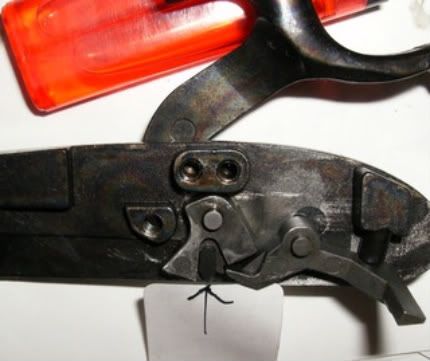Took my TC Renegade .50 to the range last week.
Seems it was taking two strikes of the Hammer for the cap to go off. Every powder charge of Goex fired on the 2nd shot.
I changed out the nipple for a new one, and had the same thing happen.
One fellow shooter suggested burnishing the nipple, so the cap would sit better. I think I did that over the summer at Scout camp (no extra nipples) and it was very reliable for ~200 shots.
Another shooter said with the age of the gun (25 years plus) it did not look like the hammer was snapping forward as well as it should.
So, I took it home and lightly burnished the new nipple. I also found new coil springs for the lock, which I ordered and now have but not installed.
I have not tried to shoot some caps to see if the burnishing took care of it.....
How many strikes should a stainless nipple last?
Should I buy hardened nipple or stick with the TC Hot Shots?
Do you polish new nipples to seat better? :bow:
Seems it was taking two strikes of the Hammer for the cap to go off. Every powder charge of Goex fired on the 2nd shot.
I changed out the nipple for a new one, and had the same thing happen.
One fellow shooter suggested burnishing the nipple, so the cap would sit better. I think I did that over the summer at Scout camp (no extra nipples) and it was very reliable for ~200 shots.
Another shooter said with the age of the gun (25 years plus) it did not look like the hammer was snapping forward as well as it should.
So, I took it home and lightly burnished the new nipple. I also found new coil springs for the lock, which I ordered and now have but not installed.
I have not tried to shoot some caps to see if the burnishing took care of it.....
How many strikes should a stainless nipple last?
Should I buy hardened nipple or stick with the TC Hot Shots?
Do you polish new nipples to seat better? :bow:







